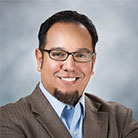How do PTAs work?

Community glue, collective power
My PTA journey began as an educator in the late 1990s. It was my first year teaching and I dutifully joined the PTA and went to their first association meeting.

Heather Ippolito is President of the California State PTA (2025-27).
Once I was there I was so impressed at the programs offered by a group of involved family members that I knew I wanted to be a part of that energy. I began as the Yearbook Chair and quickly progressed to the unit Secretary the following year. I was involved with PTA at every school I taught at.
Once I was a parent, I immediately joined the PTA during kindergarten round-up and have been volunteering at various levels of PTA ever since. This year I am so proud to take on the role of California State PTA President and work alongside these amazing volunteers who work tirelessly for kids and families in our state.
In California and across the country, the Parent Teacher Association (PTA) plays a big role in supporting public education, from community development to policy advocacy. If you’re a parent, family member, teacher, student, or community member wondering how it all works — or how to get involved — this Q&A is for you.
What is a PTA, exactly?
A PTA is a membership-based nonprofit organization that brings together families, teachers, students, and community members to support schools and advocate for kids. The “A” stands for Association: Formally, it is a structured network of affiliated organizations at the local, state, and national level. It’s not just a club—it’s a movement with a mission: to positively impact the lives of all children and families.
What do PTAs actually do?
PTAs build community, support schools, and advocate for children. They might organize events, raise funds, recruit volunteers, or advocate for policies that benefit kids. Each PTA chooses its own activities based on local needs. To be affiliated with PTA, organizations must meet some organizational requirements and maintain a certain level of insurance coverage. Learn more.
Who can be part of a PTA? Do you have to be a parent?
Anyone can join a local PTA — parents, grandparents, students, teachers, and community members. Membership is open to all who care about children and education. As of this writing in 2025, membership in PTA is organized strictly on a local basis — you have to join one or more school-level PTAs to be a member — but you can donate to the state organization without joining. (Find the link in the footer of the home page of the California state PTA.)
What does it mean to “join” a PTA?
Joining a local PTA usually means making a small donation (known as dues) and agreeing to be counted as a member. You’re not signing up to volunteer for everything — but your membership strengthens the PTA’s voice. Join here.
How is each PTA funded?
Most PTA funding comes from membership dues and local fundraising. Some PTAs also receive grants or sponsorships. Each PTA is registered as a non-profit organization, so donations are tax-deductible. Spending must align with the PTA’s mission and follow financial rules. More about PTA finance.
California State PTA also welcomes donations online through Friends of California State PTA.
Who leads each PTA?
Each PTA organization is led by an elected board — typically including at least a president, secretary, and treasurer. Many PTAs also have other offices such as vice presidents, membership chair, or a financial reviewer. See board roles.
What are some lesser-known PTA roles, like the parliamentarian?
The parliamentarian advises on meeting rules to keep things fair and orderly. Other less-visible roles may include historian, financial secretary, and various chair positions.
How are PTAs organized beyond the school level?
PTAs are organized in layers: many school-based PTA units join up to form local PTA councils. In turn, these may be organized into PTA districts, usually to match the boundaries of one or more counties. (Confusingly, PTA districts are not related to school districts!)
California State PTA and National PTA organize efforts to support students and families through advocacy work. Learn more.
What is a PTA council?
A PTA council is a local organization of volunteers that support the work of local PTA units across multiple schools, usually in the same city or area. Councils offer leadership training, help units stay informed through their newsletters or websites, and provide a space for collaboration among local leaders. Councils serve widely varying numbers of schools and range in size from small to extremely large.
How are students involved in PTAs?
Virtually all PTAs in California high schools (and many middle schools) are organized as PTSAs. The “S” stands for students, and the bylaws allow students to serve not only as members of the organization, but as officers. Explore student roles.
How are PTAs different from PTOs or parent associations?
Not all schools have a PTA. In the absence of a PTA, schools take varying approaches to cultivate community support. In some cases, school faculty members coordinate parent activities, formally or otherwise. This might be loosely called a Parent Association, but the approach can go by many names.
School leaders tend to prefer parent groups to operate at arms-length from the school partly for legal reasons: If something bad happens in a school-organized activity, the school could be exposed to liability.
When school communities formally create their own organization, it is generally known as a parent-teacher organization (PTO).
To do it right (and minimize risks), these organizations each have to do many of the same things that the state PTA provides for its local PTAs- develop and maintain bylaws, create financial structures and processes, and maintain suitable insurance coverage.
To understand how your school could benefit from a PTA over a PTO or other parent group, take a look at this simple flier.
How has PTA changed over time?
PTA began as a child advocacy group and continues to evolve. Today’s PTAs support equity, digital safety, mental health, and more. See how PTA has changed.
What’s the history of the PTA movement?
PTA is one of the oldest child advocacy organizations in America. Founded in 1897, PTA helped establish school lunch programs, kindergarten, and child labor laws. Explore PTA history.
How can you start a PTA at your school?
You’ll need a small group of people ready to be members of the PTA and a principal who is willing to have a PTA on their campus. Reach out to your PTA district leadership or State PTA — they will guide you as you complete the chartering process, elect your officers and prepare your unit bylaws. Once chartered, your PTA will receive training, access to insurance, and support. Read How to start a PTA.
Do PTAs make a difference for kids and families?
Yes. Research shows that family engagement improves student outcomes. PTA is one of the strongest ways to build a strong school community and advocate for kids.
How does PTA influence policy changes?
As the oldest and largest advocacy organization in California, PTA has experience working with policymakers. Working collaboratively, PTAs in California and throughout the nation form a powerful force in securing laws and policies for the care and protection of children, youth, and families.
Annually we hold a convention where local leaders from across the state join together to democratically develop PTA Resolutions, which call attention to a problem and a need for action on a particular issue. These resolutions are a major source of authority for the California State PTA and its units, councils, and districts. PTA Resolutions are not legislation and are very different from those that you may be familiar with from your local school board or city council. PTA Resolutions provide direction (authority) for our membership to take action.
We use our collective voice in Sacramento to advance our mission: “positively impact the lives of all children and families” on behalf of our membership. We partner with our National PTA colleagues to do the same in Washington D.C.
I hope this summary helps you to see a little bit of what a PTA could do in your community — how we can support your local leaders, provide you training opportunities, keep you in compliance with state and federal agencies, and help you do great things for kids and families in your community.
Tags on this post
All Tags
A-G requirements Absences Accountability Accreditation Achievement gap Administrators After school Algebra API Arts Assessment At-risk students Attendance Beacon links Bilingual education Bonds Brain Brown Act Budgets Bullying Burbank Business Career Carol Dweck Categorical funds Catholic schools Certification CHAMP Change Character Education Chart Charter schools Civics Class size CMOs Collective bargaining College Common core Community schools Contest Continuous Improvement Cost of education Counselors Creativity Crossword CSBA CTA Dashboard Data Dialogue District boundaries Districts Diversity Drawing DREAM Act Dyslexia EACH Early childhood Economic growth EdPrezi EdSource EdTech Education foundations Effort Election English learners Equity ESSA Ethnic studies Ethnic studies Evaluation rubric Expanded Learning Facilities Fake News Federal Federal policy Funding Gifted Graduation rates Grit Health Help Wanted History Home schools Homeless students Homework Hours of opportunity Humanities Independence Day Indignation Infrastructure Initiatives International Jargon Khan Academy Kindergarten LCAP LCFF Leaderboard Leadership Learning Litigation Lobbyists Local control Local funding Local governance Lottery Magnet schools Map Math Media Mental Health Mindfulness Mindset Myth Myths NAEP National comparisons NCLB Nutrition Pandemic Parcel taxes Parent Engagement Parent Leader Guide Parents peanut butter Pedagogy Pensions personalized Philanthropy PISA Planning Policy Politics population Poverty Preschool Prezi Private schools Prize Project-based learning Prop 13 Prop 98 Property taxes PTA Purpose of education puzzle Quality Race Rating Schools Reading Recruiting teachers Reform Religious education Religious schools Research Retaining teachers Rigor School board School choice School Climate School Closures Science Serrano vs Priest Sex Ed Site Map Sleep Social-emotional learning Song Special ed Spending SPSA Standards Strike STRS Student motivation Student voice Success Suicide Summer Superintendent Suspensions Talent Teacher pay Teacher shortage Teachers Technology Technology in education Template Test scores Tests Time in school Time on task Trump Undocumented Unions Universal education Vaccination Values Vaping Video Volunteering Volunteers Vote Vouchers Winners Year in ReviewSharing is caring!
Password Reset
Search all lesson and blog content here.
Login with Email
We will send your Login Link to your email
address. Click on the link and you will be
logged into Ed100. No more passwords to
remember!














Questions & Comments
To comment or reply, please sign in .